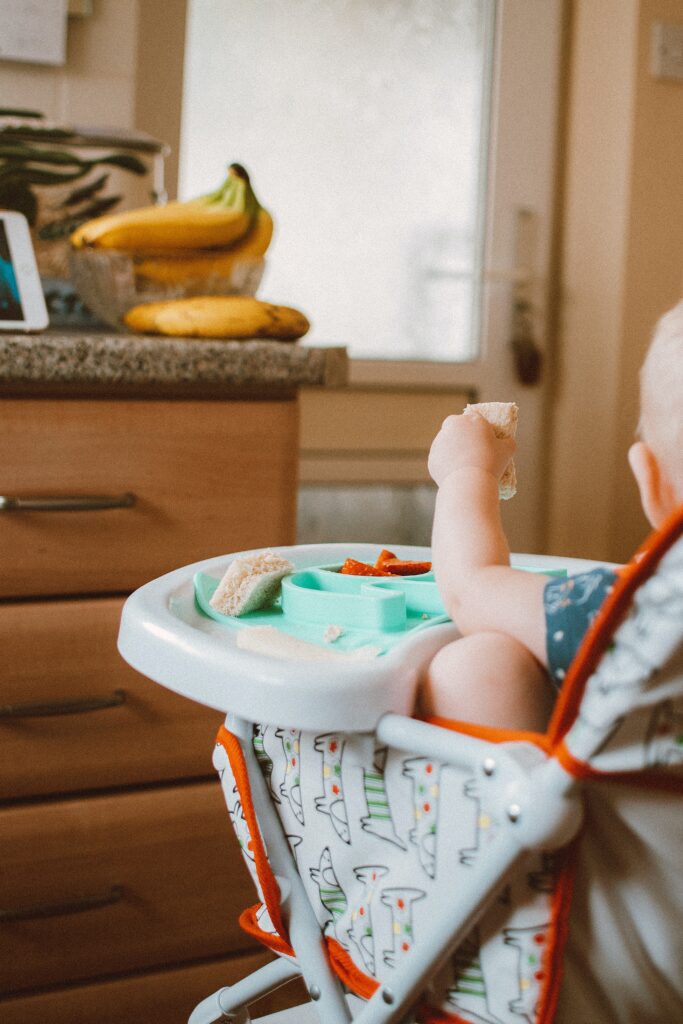Weaning is a major milestone in a baby’s development, marking the transition from exclusive milk feeding to solid foods. In India, weaning is not only a nutritional change, but also a cultural and social one. Traditional weaning practices vary by region, community, and family, and are an important way to pass on cultural heritage and family values. In this guide, we’ll explore the benefits, foods, and practices that make up traditional weaning in India, and offer tips and advice for parents starting this exciting journey.
When it comes to weaning, there are two popular approaches that parents may choose from: purees and baby-led weaning (BLW). Both approaches have their own set of advantages and disadvantages, and it’s important to consider your baby’s individual needs and preferences before deciding which approach to take.
Purees involve blending or mashing food into a smooth texture that is easy for babies to swallow. This approach allows you to control the texture and consistency of the food, making it easier for your baby to get used to eating solid foods. It also allows you to ensure that your baby is getting a balanced diet with a variety of nutrients.
On the other hand, baby-led weaning involves offering your baby whole pieces of food that they can pick up and eat on their own. This approach encourages your baby to explore food on their own terms and can help them develop important skills like hand-eye coordination and chewing. It can also be less time-consuming for parents, as you don’t have to spend time pureeing or mashing food.
However, there are also some potential downsides to each approach. With purees, there is a risk of overfeeding, as it can be easy to give your baby too much food if you’re not paying attention to their hunger cues. Additionally, some babies may become dependent on purees and may have difficulty transitioning to more textured foods.
With baby-led weaning, there is a risk of choking, as babies may struggle to chew and swallow larger pieces of food. It may also be more challenging to ensure that your baby is getting a balanced diet with a variety of nutrients.
Ultimately, the choice between purees and baby-led weaning is a personal one, and what works for one family may not work for another. You may also choose to combine the two approaches and offer a mix of purees and finger foods to your baby. Whatever approach you choose, be sure to consult with your pediatrician and monitor your baby’s progress closely to ensure that they are getting the nutrition they need to grow and thrive.
While baby-led weaning is gaining popularity in India, starting with purees is still the most common method of weaning. There are several reasons for this:
Cultural tradition: In many Indian households, it’s customary to start with pureed or mashed foods when introducing solids to babies. This is often seen as a gentler and safer way to introduce babies to new foods and textures.
Availability of equipment: Many families in India do not have access to high chairs or other specialized equipment for baby-led weaning. Starting with purees or mashed foods can be more practical and easier to manage in a regular dining setting.
Concerns about choking: Choking is a common concern for many parents when it comes to introducing solid foods. Pureed or mashed foods are often seen as safer and less likely to cause choking.
In a future post, we will explore how parents can start with Baby-Led Weaning for their child. For now, let’s continue this post by focusing on traditional weaning.
Traditional Weaning Foods
In India, traditional weaning foods include a wide variety of cereals, fruits, vegetables, legumes, and dairy products, as well as herbs and spices. Some of the most common weaning foods are rice, dal, khichdi, ragi, mashed fruits like banana and papaya, and steamed or boiled vegetables like carrot, sweet potato, and pumpkin.
Region-specific weaning foods and practices can vary widely, depending on the climate, geography, and cultural background. For example, in the north, wheat and maize-based porridges are popular, while in the south, rice-based dishes like idli and dosa are common. In the west, legumes like chana and rajma are often used, while in the east, fish and other seafood may be introduced early on.
Nutritional value is a key factor in choosing weaning foods, as well as their digestibility, texture, and safety. It’s important to avoid spicy or fried foods, as well as foods that may cause allergies or choking hazards. Many Indian families prefer to make their own baby food at home, using fresh and organic ingredients, to ensure the highest quality and safety.
How to Start the Weaning Process
The best time to start weaning is around 6 months of age, when the baby shows signs of readiness, such as sitting up, reaching for food, and losing the tongue-thrust reflex. Before starting weaning, it’s important to consult with a pediatrician or a nutritionist, and to ensure that the baby is healthy and well-nourished.
Preparing for weaning involves getting the right utensils, such as soft spoons, small bowls, and sippy cups, and creating a safe and comfortable environment for the baby to explore new foods. It’s also important to introduce one food at a time, and to observe for a few days for any adverse reactions or allergies before starting the next food item.
Step-by-step guide to introducing solid foods to the baby:
- Start with small amounts of well-cooked and mashed foods, such as rice, dal, or mashed fruits.
- Offer a new food every few days, and gradually increase the quantity and variety of foods.
- Be patient and encouraging, and let the baby explore and experiment with different tastes and textures.
- Breastfeed or bottle-feed the baby 30-40 minutes after their meal to start establishing solids as the main form of nutrition for them.
As your baby grows, you can start introducing more diverse foods and flavors. Be sure to offer a variety of foods from different food groups to ensure that your little one is getting all the nutrients they need. You can start introducing pulses, like dal, and more vegetables and fruits. You can also try introducing small amounts of spice and herbs to their food to help them get used to the flavors of Indian cuisine.
It’s important to remember that weaning is a gradual process, and your baby may take some time to adjust to new foods and textures. Be patient, and continue to offer a variety of foods to help them explore new flavors and textures.
Essential Items for a Seamless Weaning Process
- High chair or booster seat: We like this IKEA high chair for its affordability and ease of use, as well as simple cleaning. You can just take it to the bathroom and use a shower to get the food out.
- Bibs: This is a great bib that is easy to clean and its unique design also catches food that your baby might spit out while eating.
- Spoons: You can use these training spoons to help your child learn how to self feed. These spoons are great for purees and allow your child to taste liquidy food in a less messy way. We also love these heat-sensitive spoons that let you know if the food is too hot/the right temperature.
- Bowls: These suction bowls stick to your high chair tray or table, to prevent spills.
- Sippy cups or training cups: We love the munchkin weighted straw cups. We tried competitor brand weighted cups but frankly nothing comes close in terms of quality and ease of use. I personally bought three for my daughter.
- Blender or food processor for pureeing food: The most underrated item that changes the game for working parents. This food processor steams & purees your food in one go, saving you a ton of time.
- Steamer or pressure cooker for cooking food: We use the Instant Pot, which is useful for so many other things, but especially useful for making baby food too.
- Finger brush to clean baby’s teeth and gums after meals
In summary, traditional weaning in India is a gradual process that involves introducing a variety of soft, mashed or pureed foods to your baby. It’s important to start with simple, easy-to-digest foods and gradually introduce new flavors and textures. Be sure to consult with your pediatrician if you have any concerns about your baby’s nutritional needs, and enjoy exploring the delicious world of Indian cuisine with your little one.



